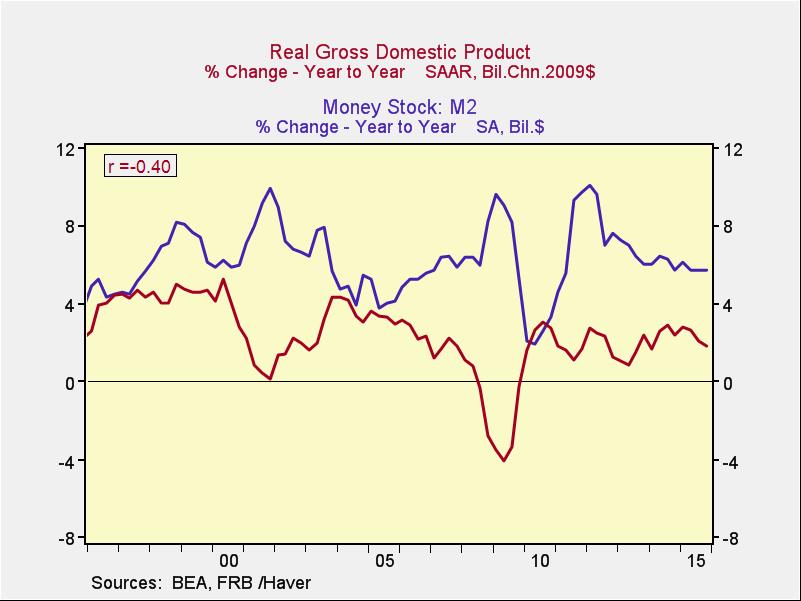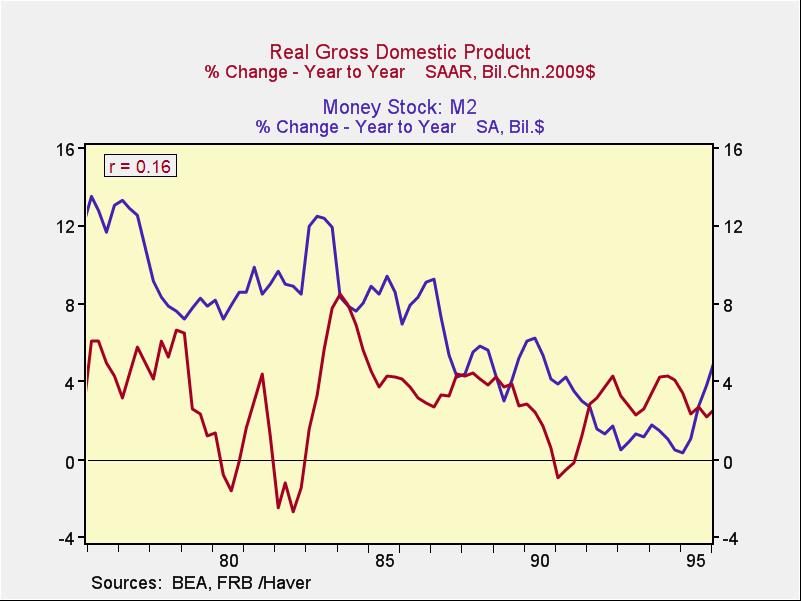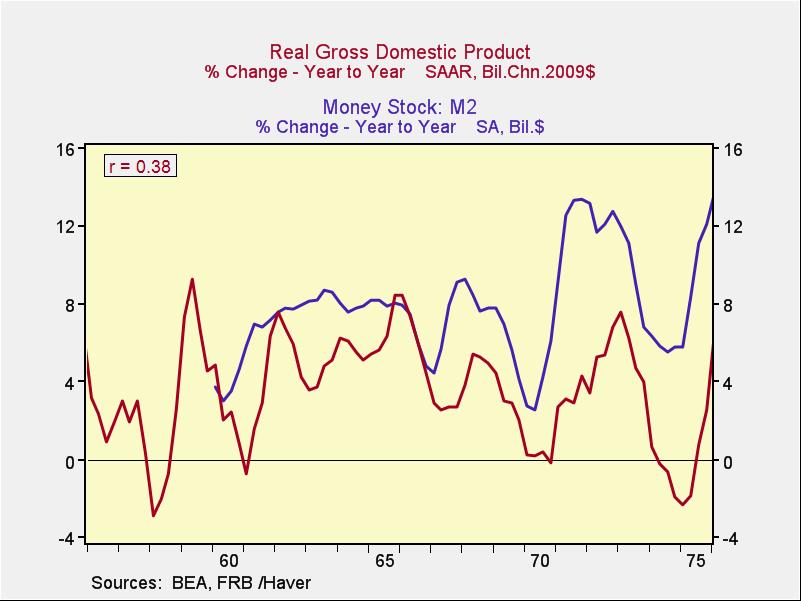In our last column, we concluded that the recent decline in money velocity is due to the money supply increasing faster than economic growth, rather than a collapse in growth itself. So, at worst, slower money velocity is a symptom of potential trouble rather than a cause.
Today, let’s consider another side of the issue: is the fact that growth in the money supply exceeds that of the economy itself either a symptom or cause of future economic trouble?
From a timing perspective, this looks quite plausible, as you can see above. From a policy perspective, with both the Greenspan and Bernanke Feds, it seems not only plausible but very likely. From an economic point of view, with two of the largest crises in history in the past 20 years giving rise to large monetary policy responses, it also seems likely. If so, the rise in money supply growth was not a cause of poor economic performance but a consequence.
Looking back 40 years. If that’s the case, the normalizing growth rate is actually a positive sign for the future. In order to test this idea, let’s consider the relationship between money supply and growth in another time period—say, the previous 20 years, as shown in the following chart.
Here, you can see that the relationship between money supply growth and economic growth was positive, not negative, suggesting that the experience of recent years isn’t necessarily indicative of the future. The positive relationship was not large, of course, but this time period indicates that money supply growth hasn’t necessarily been bad for the economy.
Looking back 60 years. On the other hand, the 40-year time period also has its issues—notably, the inflation in the late 1970s and the Volcker high-interest-rate regime in the 1980s. If we go back another 20 years, we see that the relationship between money growth and economic growth is almost exactly the opposite of the past 20 years, as shown in the following chart.
The change in the relationship between money supply growth and economic growth therefore seems reasonably related to monetary policy, which in turn depends to a large extent on economic events such as inflationary trends.
What happens when we compare money supply growth with consumer inflation trends? Once again, we see the same thing: a negative relationship, a positive relationship, and no relationship. With no consistency, there seems to be no direct causal link.
Economic growth and the money supply: what's the relationship?
Looking back 20 years. The following chart shows the connection between growth and changes in M2 over the past 20 years.
As you can see, there has been a significant negative correlation between money supply growth and economic growth—that is, the faster the money supply grew, the worse the economy did, which is exactly the worry many have now. But before we conclude that fast money growth caused poor economic performance, we have to consider whether the bad economic performance caused the spike in money growth, rather than the other way around.










